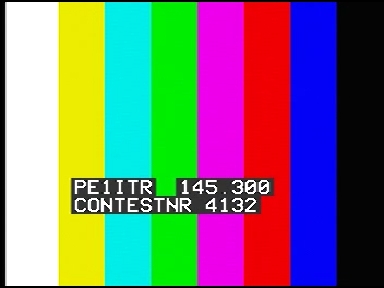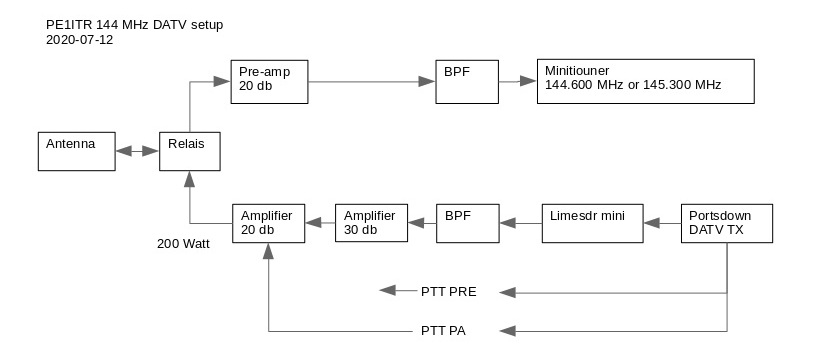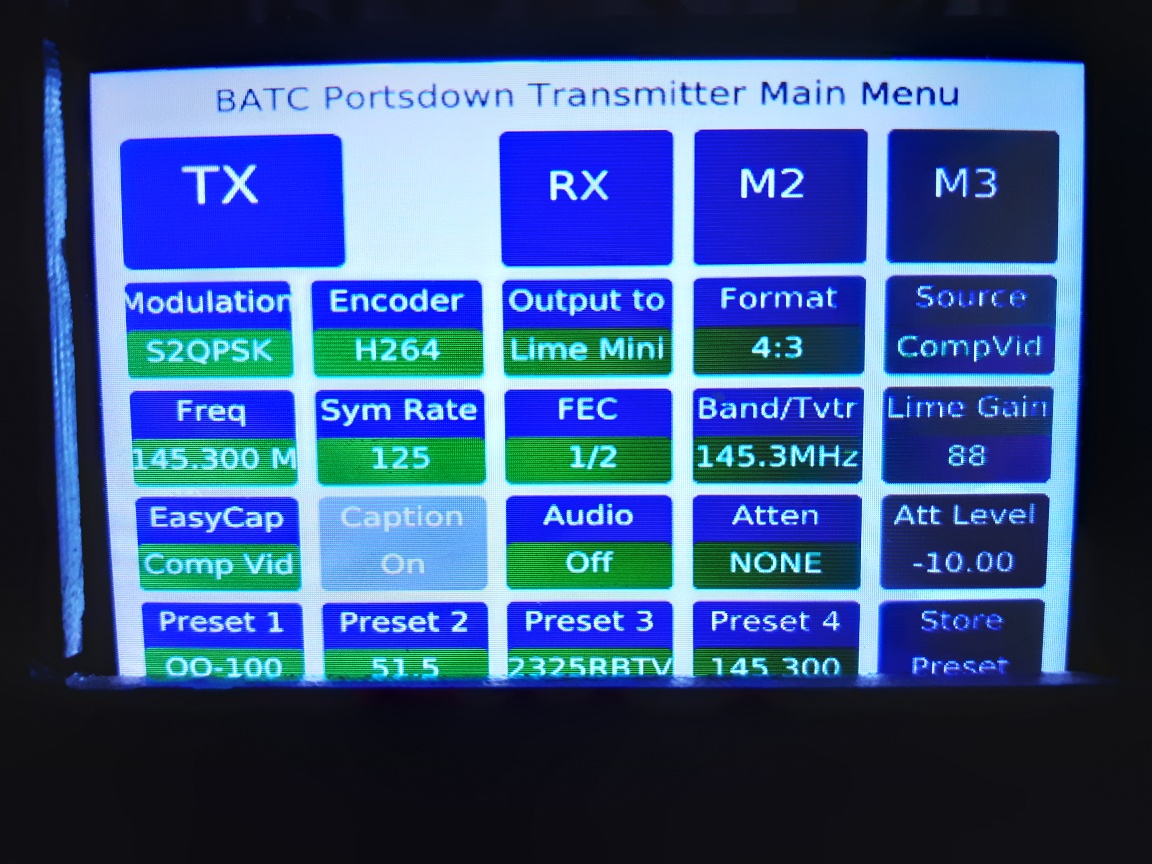144 MHz DATV
(2020-07-11) PE1ITR
Preface
This page is about my VHF DATV experiments and in this case at 144 MHz. It is also instructive to experiment with DATV in the 50 MHz band and that is descibed on this page. At 2m there is less space for DATV on the band, but with limited bandwidth nice results can be achieved.
I started doing this a year ago. Especially during the ATV contest I try to be QRV with DATV at 2m and I notice that there are increasingly counter stations. Although this number is still very limited. I have worked 5 stations so far where the distance of the furthest QSO was 175 km.
I describe on this page what my station looks like. And what are the most suitable frequencies on 2m within the available frequency range.

144 MHz DATV Spectrum Usage
Below a picture of the spectrum usage at 2m in any weekend. It indicates also the place where you could broadcast DATV for a short time. These are the red (SR 125 kHz) and yellow (SR 250 kHz) bars in the picture. The most suitable frequencies are 144,600 MHz or 145,300 MHz. At 2m a symbol rate of 125 kHz or less can be justified. This gives a maximum bandwidth of 125 * 1.3 = 162.5 kHz. The higher symbol rate does not fit well in the band plan due to the larger bandwidth, so that other experiments may experience interference. The DATV experiments will therefore have to be limited to a maximum bandwidth < 200kHz.
Conversely, it is also the important that you have the most interference-free reception. In a study here I looked at to what extent signal levels deteriorate the reception of the DATV signal. You can say that a carrier signal less than 20 db below the DATV signal has a disturbing influence. The carrier signal can be almost at the same level as the DATV signal before the image can no longer be demodulated.

The RED bars represent the most suitable DATV frequency. 144.600 MHz and 145.300 MHz bandwidth < 200 kHz.
My Station
My station setup is constantly changing. However, basically I use my SSB/CW station with these specifications:
Portsdown DVB-S2 Transmitter. The filtered and amplified to 200 watts DATV. With a good linear amplifier you can get 20% of the normal output at DATV. It is important that the shoulders are 35db or more lower than the main signal.
10 elements yagi. Horizontal polarization.
Receiver: premplifier 0.5 db NF > Bandfilter > Minitiouner Receiver.

Settings
Finding the right settings is part of the experiment. Usually for DATV DX DVB-S2 is used with SR 125 kHz and an FEC 1/2 or stonger. I have had good experiences with this when it comes to weak signals. However, it is also interesting to work with even narrower bandwidths. A small study about this subject is described here.

HOME | Go Back


